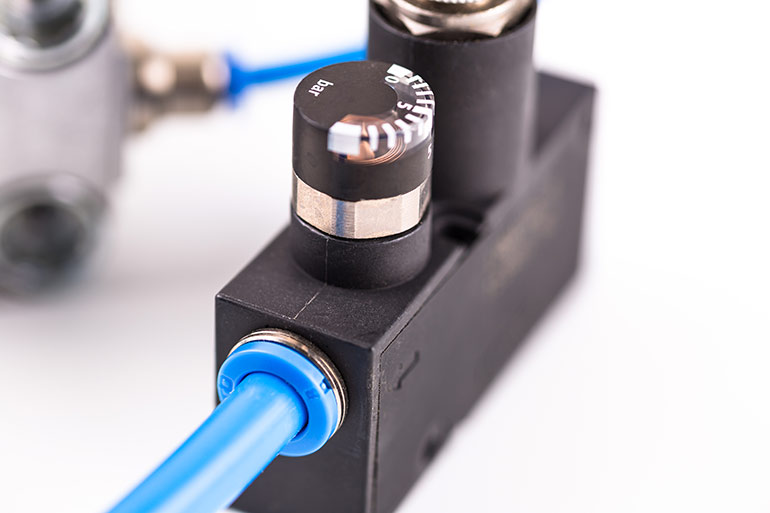Electropneumatic flow controllers and regulators are by nature both electrical and mechanical, thus requiring the designer to develop two sets of specifications for the regulator to function properly.
The pneumatic or mechanical portion of the device is the same as a standard flow control valve or regulator. As with many things in fluid power, the designer’s preference on starting point may be different. A reasonable method is to determine the general operating flow rates or pressure required.

It is important to avoid a one-size-fits-all-approach. Flow control for a circuit requiring 200 lpm could easily be covered by a flow controller rated for 0 to 1,000 lpm, and requirement setting would not be an issue. Similarly, a pressure regulator for a circuit requiring 40 psi could easily be covered by a regulator rated for 0 to 120 psi, and requirement setting once would not be an issue.
The method of specifying of an electro-pneumatic pressure regulator is similar in that you must know the pressure range, typically allowing a window of about +/-10% the pressure range. The smaller the range divided over the range of the possible input signals, the more precise the degree of control. This is known as resolution.
The next consideration is the fitting size selection. The designer needs to be mindful of the pressure drop because of the port sizing. The difference in flow rate between a standard 1/8” port and a ¼” is proportionally greater than the 1/8” sizing difference between the two. Also, if using it to control a gas other than compressed air, it is important to review the seal compatibility to verify conformance.
When reviewing electrical requirements for a pressure regulator, consult the controls designer to determine the selections to properly interface with existing machinery. Most pressure regulator and flow controller control signals are supplied in either 0-10 VDC (voltage) or 4-20 mA (current).
After determining a control signal option, it is important to review electrical connections. There are many choices, and some manufacturers have proprietary cable sets. Once again, it is important to verify compatibility with existing equipment. This is also the time to determine if the environment is classified as “hazardous,” as it may require a device to carry additional certification for its electrical connections.
Filed Under: Engineering Basics, Pneumatic Tips, Technologies, Valves & Valve Manifolds